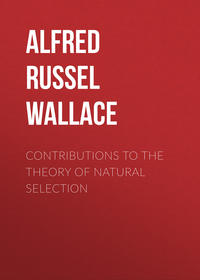 полная версия
полная версияIsland Life; Or, The Phenomena and Causes of Insular Faunas and Floras
5. Mr. T. Kirk (writing in 1878) states that—"in Auckland, where a dense sward of grass is soon formed, single specimens of the European milk Thistle (Carduus marianus) have been known for the past fifteen years; but although they seeded freely, the seeds had no opportunity of germinating, so that the thistle did not spread. A remarkable exception to this rule occurred during the formation of the Onehunga railway, where a few seeds fell on disturbed soil, grew up and flowered. The railway works being suspended, the plant increased rapidly, and spread wherever it could find disturbed soil."
Again:—"The fiddle-dock (Rumex pulcher) occurs in great abundance on the formation of new streets, &c., but soon becomes comparatively rare. It seems probable that it was one of the earliest plants naturalised here, but that it partially died out, its buried seeds retaining their vitality."
Medicago sativa and Apium graveolens, are also noted as escapes from cultivation which maintain themselves for a time but soon die out. (Transactions of the New Zealand Institute, Vol. X. p. 367.)
The preceding examples of the temporary establishment of plants on newly exposed soil, often at considerable distances from the localities they usually inhabit, might, no doubt, by further inquiry be greatly multiplied; but, unfortunately, the phenomenon has received little attention, and is not even referred to in the elaborate work of De Candolle (Géographie Botanique Raisonnée) in which almost every other aspect of the dispersion and distribution of plants is fully discussed. Enough has been advanced, however, to show that it is of constant occurrence, and from the point of view here advocated it becomes of great importance in explaining the almost world-wide distribution of many common plants of the north temperate zone.
192
Sir Joseph Hooker informs me that he considers these identifications worthless, and Mr. Bentham has also written very strongly against the value of similar identifications by Heer and Unger. Giving due weight to the opinions of these eminent botanists we must admit that Australian genera have not yet been demonstrated to have existed in Europe during the Tertiary period; but, on the other hand, the evidence that they did so appears to have some weight, on account of the improbability that the numerous resemblances to Australian plants which have been noticed by different observers should all be illusory; while the well established fact of the former wide distribution of many tropical or now restricted types of plants and animals, so frequently illustrated in the present volume, removes the antecedent improbability which is supposed to attach to such identifications. I am myself the more inclined to accept them, because, according to the views here advocated, such migrations must have taken place at remote as well as at recent epochs; and the preservation of some of these types in Australia while they have become extinct in Europe, is exactly paralleled by numerous facts in the distribution of animals which have been already referred to in Chapter XIX., and elsewhere in this volume, and also repeatedly in my larger work.
193
Out of forty-two genera from the Eocene of Sheppey enumerated by Dr. Ettingshausen in the Geological Magazine for January 1880, only two or three appear to be extinct, while there is a most extraordinary intermixture of tropical and temperate forms—Musa, Nipa, and Victoria, with Corylus, Prunus, Acer, &c. The rich Miocene flora of Switzerland, described by Professor Heer, presents a still larger proportion of living genera.
194
The recent discovery by Lieutenant Jensen of a rich flora on rocky peaks rising out of the continental ice of Greenland, as well as the abundant vegetation of the highest northern latitudes, renders it possible that even now the Antarctic continent may not be wholly destitute of vegetation, although its climate and physical condition are far less favourable than those of the Arctic lands. (See Nature, Vol. XXI. p. 345.)
195
Dr. Hector notes the occurrence of the genus Dammara in Triassic deposits, while in the Jurassic period New Zealand possessed the genera Palæozamia, Oleandrium, Alethopteris, Camptopteris, Cycadites, Echinostrobus, &c., all Indian forms of the same age. Neocomian beds contain a true dicotyledonous leaf with Dammara and Araucaria. The Cretaceous deposits have produced a rich flora of dicotyledonous plants, many of which are of the same genera as the existing flora; while the Miocene and other Tertiary deposits produce plants almost identical with those now inhabiting the country, together with many North Temperate genera which have since become extinct. (See p. 499, footnote, and Trans. New Zealand Inst., Vol. XI. 1879, p. 536.)
196
The fact stated in the last edition of the Origin of Species (p. 340) on the authority of Sir Joseph Hooker, that Australian plants are rapidly sowing themselves and becoming naturalised on the Neilgherrie mountains in the southern part of the Indian Peninsula, though an exception to the rule of the inability of Australian plants to become naturalised in the Northern Hemisphere, is yet quite in harmony with the hypothesis here advocated. For not only is the climate of the Neilgherries more favourable to Australian plants than any part of the North Temperate zone, but the entire Indian Peninsula has existed for unknown ages as an island and thus possesses the "insular" characteristic of a comparatively poor and less developed flora and fauna as compared with the truly "continental" Malayan and Himalayan regions. Australian plants are thus enabled to compete with those of the Indian Peninsula highlands with a fair chance of success.









